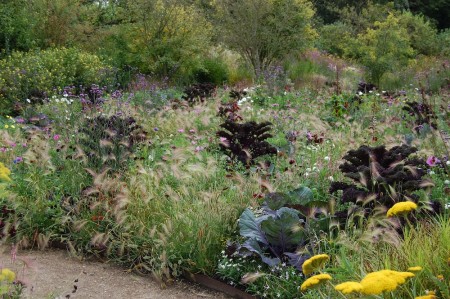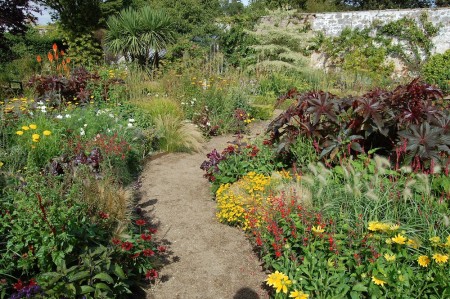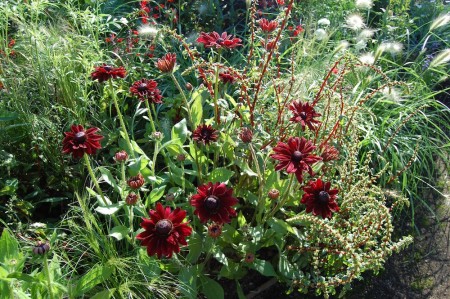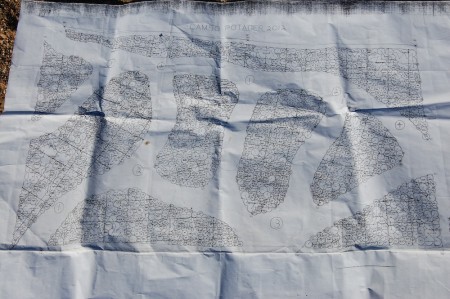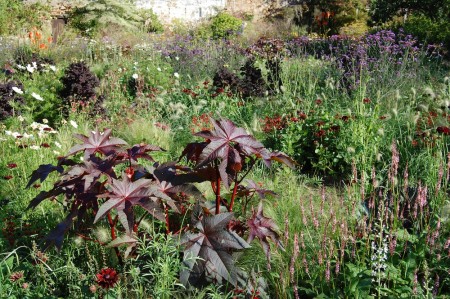The potager – that ornamental version of the vegetable garden was always a bit precious. Too many people had visited Chateau Villandry on the Loire and thought they could do a mini-version. The results were all too often a neurotic assemblage of over-controlled vegetables that no-one dare harvest as it would spoil the picture. I remember the late Rosemary Verey (a v. famous English designer, did Prince Charles’s garden) making one, which struck me as taking vegetable-ordering to an extreme. I heard that her daughter’s horse got in there one day. HA! Villandry itself is extraordinary, but absurd. Its creator was an ultra-catholic with near-fascist politics who saw the garden as a political statement about how society should be organized. Yuk! The vegetable garden as Nuremberg rally.
The French potager tradition itself has now mutated wonderfully, as so many Brit visitors to France report back on “those wonderful roundabouts, why can’t we have roundabouts like that”. You can’t have roundabouts like that because Margaret Thatcher sold off the parks departments years ago, with a massive loss of skills and a whole municipal gardening culture. So even if we could find the money for them they would be difficult to emulate. In France and Germany they seem to have evolved a way of making summer plantings which roll together vegetables, annuals, perennials, wildflowers, anything growing to make the most wonderful combinations. The French seem the most skilled here, but any German garden show has examples and some public parks. Good planting = municipal pride.
The English speaking world seems sadly bereft of these summer planting skills. One place in Britain, where we have got innovative potager planting is at Cambo in Scotland, where Elliott Forsyth keeps himself occupied in the long winter nights producing the annual potager plan.
The pictures here were taken either this year or in previous years and they show certain common elements which seem crucial to success, such as the red-leaved Ricinus and the red kale. There are some perennial components, but everything else changes from year to year. By late summer Pennisetum grasses seem to always play a role. Its a way of playing with the creativity of planting in the knowledge that its only got to last one summer. I think lessons learned here feed back into the rest of the garden. This is the potager freed from obsessive order and allowed to get wild.

